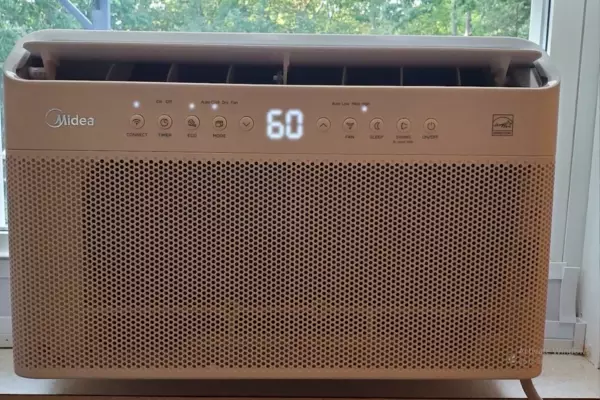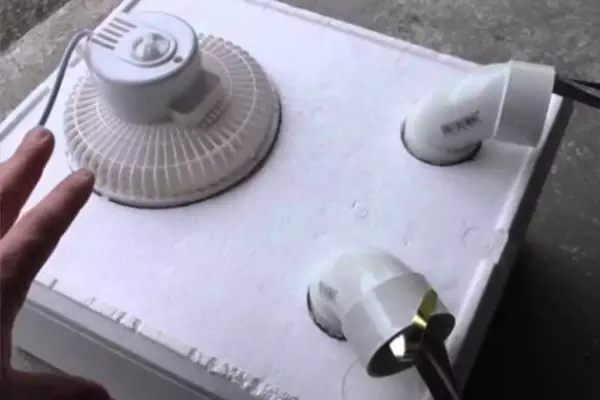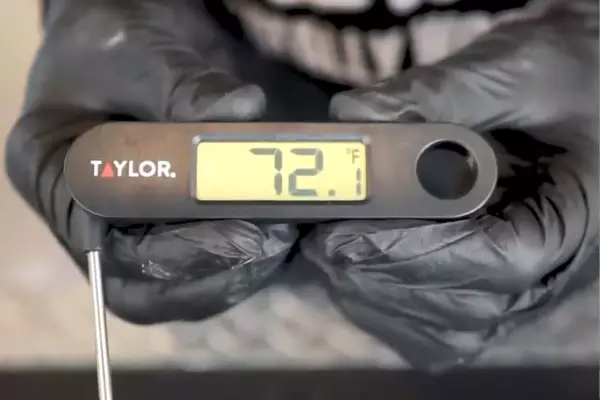Air conditioners, a common appliance in many households, are a maze of technical components working together for optimal performance. One element you might not be aware of is the Styrofoam tucked inside your AC. This lightweight, water-resistant material serves crucial roles in the operation of your air conditioner.
Styrofoam in your air conditioner primarily offers insulation and noise reduction. Moreover, it contributes to the energy efficiency of the unit by reducing heat transfer. This blend of properties makes it a beneficial material in AC units.
From insulation to noise absorption, the use of Styrofoam significantly enhances the overall effectiveness of air conditioners. Styrofoam pieces in your AC, however, are not invincible. They may deteriorate over time, demanding immediate attention for the smooth running of the unit.
Contents
Role of Styrofoam
Insulation Properties
Styrofoam, composed of expanded polystyrene, is an exceptional insulator. It helps maintain temperature consistency inside the air conditioning unit, aiding in the cooling process. By reducing heat transfer, Styrofoam ensures that the air conditioner cools air effectively.
Energy Efficiency Contribution
Due to its insulation properties, Styrofoam also plays a key role in energy efficiency. An air conditioner with well-maintained Styrofoam can cool the air faster, reducing the energy required to reach the desired temperature.
Noise Reduction Feature
Another essential feature of Styrofoam is noise reduction. AC units can be loud, especially when the compressor kicks in. Styrofoam absorbs the sound and vibrations, leading to quieter operation and increased comfort for users.

Styrofoam Inside AC Units
Air conditioning units are sophisticated devices that employ a variety of materials in their construction, among which Styrofoam plays a crucial role.
Places of Usage
Styrofoam is primarily utilized within the air handler, the component of your air conditioning unit that regulates and circulates air. The air handler houses the evaporator coil and the blower, among other parts. The Styrofoam lining in this section helps in reducing noise and offering insulation.
Additionally, Styrofoam can be found encasing the compressor, a part usually located outside in the split AC unit. The compressor, being the heart of the cooling cycle, generates heat and vibrations, both of which are efficiently managed by the Styrofoam casing.
Types and Specifications
When it comes to the type of Styrofoam used, it often differs based on the model and make of the air conditioner. Some units might use extruded polystyrene foam, known for its exceptional insulation properties, moisture resistance, and durability.
Others may employ expanded polystyrene foam, a lighter, less dense, yet effective insulator. The type and thickness of the Styrofoam used directly influence the noise absorption, insulation, and overall performance of the air conditioner.
Therefore, manufacturers specify the Styrofoam that best complements their units to maximize their efficiency and longevity.
Lifespan and Durability
Under regular usage and with proper care, the Styrofoam in your air conditioner can last for many years. However, its lifespan can be affected by several factors such as the extent of use, frequency of maintenance, and environmental conditions. Over time, the Styrofoam might wear down, lose its efficiency, and require replacement.
Why Styrofoam May Deteriorate
While Styrofoam is known for its durability and longevity, it is not invincible. There are several factors that may contribute to its deterioration in your air conditioner.
Common Causes
Age is a significant factor in the deterioration of Styrofoam. Over time, the material can become brittle, crack, or break down. Furthermore, excessive moisture can speed up the degradation process, as can the use of harsh chemicals during cleaning. In addition, pest infestation, such as rodents chewing on the Styrofoam, can also cause damage.

Environmental Factors
The environment in which the air conditioner operates can have a substantial impact on the Styrofoam’s lifespan. Exposure to extreme temperature fluctuations, high humidity, and direct sunlight (UV radiation) can accelerate Styrofoam degradation, particularly for outdoor units.
Impact of Poor Maintenance
Maintenance plays a key role in the lifespan of Styrofoam in your AC. Neglecting regular cleanings and inspections can lead to dust and dirt accumulation, which can foster mold and mildew growth. These microorganisms can eat away at the Styrofoam, causing it to weaken and break down.
Signs of Deteriorating Styrofoam
Knowing the signs of Styrofoam deterioration can help you address the problem before it escalates, causing more serious damage to your air conditioner.
Unexpected Noises
The noise reduction capability of Styrofoam can make your AC operate more silently. However, if the Styrofoam lining begins to deteriorate, you may start to notice an increase in the noise level, particularly when the compressor is working. This could be a hum, a rattle, or other unusual sounds emanating from your AC unit.
AC Efficiency Decrease
Styrofoam contributes significantly to the energy efficiency of your AC. If the unit starts taking longer than usual to cool your space, or if you observe a sudden spike in your energy bills, it could be an indication of deteriorating Styrofoam. The lack of proper insulation could make the AC work harder to cool the air, using more energy in the process.
Visual Cues
Apart from these signs, visual inspection can also reveal issues with the Styrofoam. Look out for visible signs of wear and tear like cracks, discoloration, or parts breaking off. Such signs should not be taken lightly and need immediate attention.
Consequences of Neglect
Ignoring deteriorating Styrofoam can lead to several unwanted consequences, affecting the performance of your air conditioner and even causing damage.
Damage to AC Components
The lack of proper insulation due to deteriorating Styrofoam can lead to overheating of other components like the compressor. Overheating can cause these components to fail prematurely, leading to costly repairs or even the need for a replacement.
Increased Energy Consumption
A poorly insulated AC unit has to work harder to maintain the desired temperature, which means it will consume more energy. This increased energy consumption will be reflected in your utility bills, causing them to rise significantly.
Reduced Lifespan of Unit
If Styrofoam deterioration is consistently ignored, it can reduce the overall lifespan of your AC unit. The excess strain on the components can cause them to wear out faster, leading to early failure of the unit.

Tips to Maintain AC Styrofoam
Regular AC Checks
Regularly inspect your air conditioner for signs of Styrofoam deterioration. Early detection can prevent severe damage and costly repairs.
Professional Maintenance Advice
Enlist the help of a professional for regular maintenance. They can provide expert advice on preserving the Styrofoam in your AC unit.
Cleaning and Care
Clean your AC unit regularly, but avoid harsh chemicals that could damage the Styrofoam. Gentle cleaning and care can prolong the life of the Styrofoam.
Replacing Damaged Styrofoam
When to Replace
If the Styrofoam in your AC is visibly damaged, it’s time to replace it. Continuous operation with deteriorated Styrofoam can harm the unit and decrease efficiency.
Finding the Right Type
Ensure you replace with the correct type of Styrofoam for your unit. The wrong type may not provide adequate insulation or fit properly.
DIY vs Professional Service
While some minor repairs can be a DIY project, consider hiring a professional to replace Styrofoam. They can ensure a proper fit and safe handling of the unit.
Frequently Asked Questions
Can I replace the Styrofoam in my AC myself?
Yes, but it’s advisable to hire a professional to ensure correct installation and to avoid causing further damage to the unit.
How often should I check the Styrofoam in my AC?
Regular checks are advisable, especially before the start of a season when you’ll be using your AC frequently.
What happens if I ignore damaged Styrofoam?
Ignoring damaged Styrofoam can lead to a decrease in AC efficiency, increased energy consumption, and even damage to other AC components.
Conclusion
The role of Styrofoam in air conditioners is often overlooked, yet its importance cannot be understated. From providing insulation to aiding in noise reduction, Styrofoam contributes significantly to the efficient operation of your AC unit.
Regular maintenance checks and a keen eye for signs of Styrofoam deterioration can help maintain the longevity and efficiency of your air conditioner. Replacing damaged Styrofoam in a timely manner can save you from higher energy bills and costly repairs down the line.
In the end, the care you give to your air conditioner, including the Styrofoam within, reflects in the service it renders back to you. Keep it in its best condition, and it will serve you well through the hot summer days and beyond.

